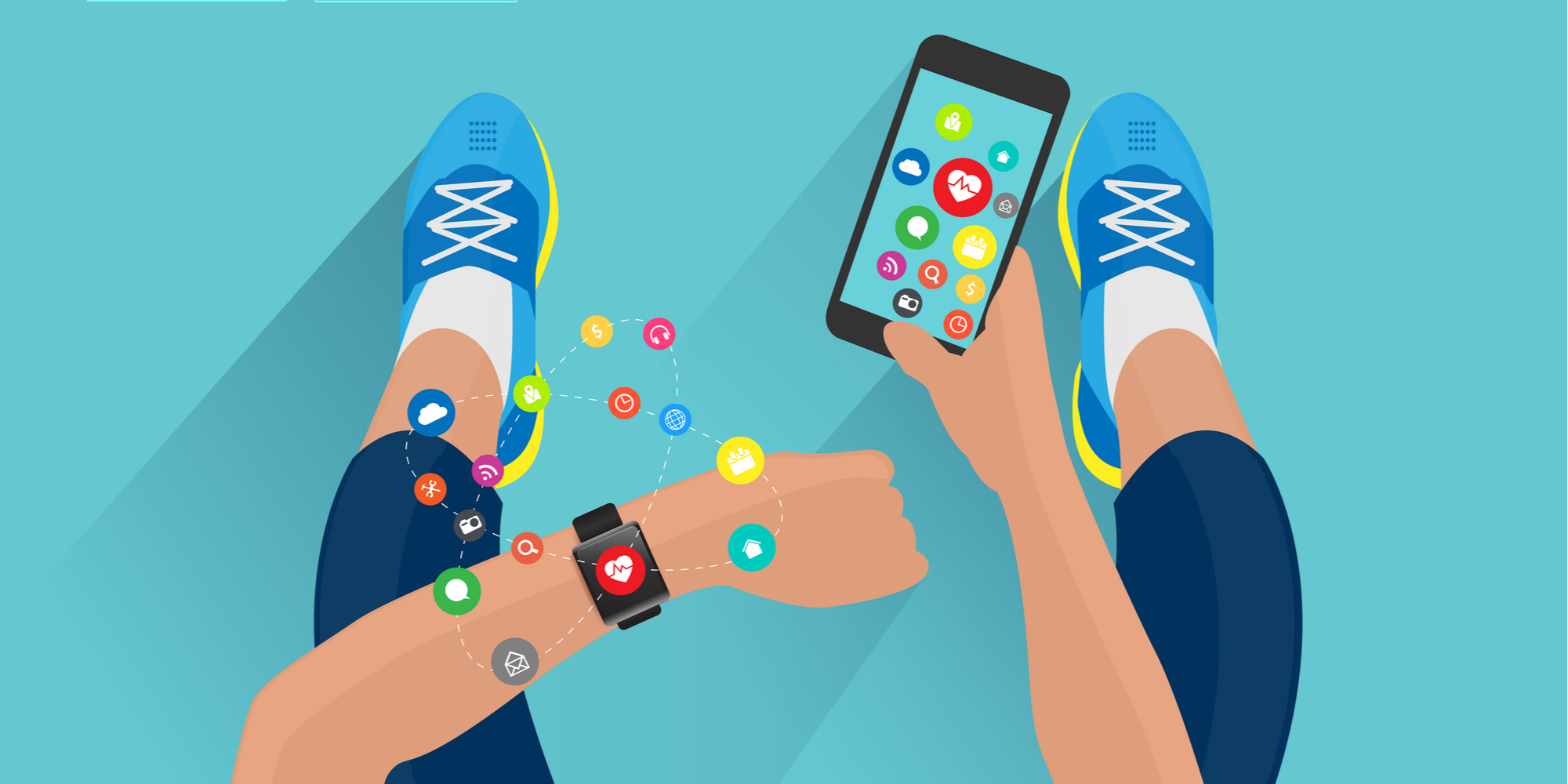At MindSea, we don’t just design and develop apps. While it is the primary focus of our work, it’s more common for us to work with clients on more complex “digital ecosystems” that include a mobile app, one or more responsive websites, a secure backend and integrations with smart devices and wearables.
We see it becoming more the norm that our projects include at least one integration with a smart device, and usually, its purpose is to provide valuable health or tracking data to support the main functions of a mobile app. Every year, new devices with improved quality and variety are being introduced, enabling the development of more sophisticated and helpful digital health apps. For this blog post, we thought it would be valuable to do a round-up of the most common digital health app features that we see driving improved health research, and better patient outcomes.
Wearable Movement Tracking: Tracking the amount of exercise and assessing movement efficiency and/or effectiveness continues to be a central focus. Wearables like the Apple Watch are becoming more accurate and sophisticated in monitoring physical activity, enabling users to optimize their exercise routines and overall health. It can also be a powerful tool to improve patient outcomes through an integration with Apple Health and Google Fit. For example, we built a feature that would analyze the effectiveness of physiotherapy exercises in real-time and give advice on how the patient could modify their efforts for a faster injury recovery. Check out the case study of our work with Sunnybrook Research Institute on the Halterix app designed to improve patient outcomes with better physical therapy adherence.
Sleep Tracking: The growing awareness of the importance of sleep for overall health has driven a surge in sleep tracking. Wearables have become adept at providing insights into sleep quality and patterns, helping users make lifestyle adjustments for better rest. This shift towards a more holistic approach to health recognizes the pivotal role sleep plays in our physical and mental well-being. However, monitoring sleep is a highly nuanced and sensitive matter. Consequently, we find the user experience and design of sleep monitoring becomes more important than the technological integration. Looking forward, we see it being used in applications like monitoring patients with other conditions affected by sleep disorders, e.g., COPD.
LIDAR Technology: LIDAR, once reserved for high-end applications like autonomous vehicles, has made its way into our smartphones. This addition opens up a world of possibilities, from enhanced spatial awareness to gesture recognition, potentially expanding wearables’ use cases beyond health and fitness. We can envision applications in augmented reality and virtual reality experiences, revolutionizing how we interact with our digital environments. Forbes recently wrote about how AI and LIDAR applications could start to improve digital health.
QR Code Scanning: Another noteworthy trend, though not really a new one, is the use of the camera QR code recognition service. Smartphone cameras have been able to do this for years, but it still feels like many use cases have not been quite right for this powerful feature. We recently built an app that allows farmers to use complicated QR-coded information to facilitate the management of genetic testing kits for cattle. The use case was a perfect fit, especially when the real-world context of a working farm was considered.
User-generated health data: A strong theme we’ve seen emerge in the last few years and that is continuing to grow is the desire of healthcare clients to develop bespoke features in their apps to allow users to share important clinical information with healthcare professionals or app owners within the app itself. For example, daily mood trackers, or quizzes monitoring sleep patterns, activity levels, or prescription medication intake. These can be highly effective features for connecting healthcare providers with patients and users, but raises the bar on privacy, security, and ethical uses of data. For a fascinating use case, check out our Blue Charm Adherence case study (#4 “Incentivizing Adherence”).
The landscape of digital health apps continues to evolve rapidly, with a focus on creating comprehensive digital ecosystems that integrate unique combinations of mobile apps, responsive websites, secure backends, and smart device connections. The incorporation of wearable movement tracking, LIDAR technology, sleep tracking, QR code scanning, and user-generated health data has expanded the usefulness and scope of the capabilities of these apps significantly.
However, the MindSea perspective is not to see these new technologies as an excuse to throw the whole kitchen sink into every new digital health app, but instead to deliberately plan the right mix of features that fully meets the users needs, and delivers better health outcomes.
Have a project you would like to discuss with us? Take a minute to schedule a free call with our Director of Client Experience today!
With over 350,000 healthcare apps in the marketplace and a more savvy user base, finding a strategic partner who understands consumer expectations, design trends, and best practices will only add value and efficiency to your app build.Learn more about how MindSea can help elevate your digital product strategy and develop health and wellness solutions that optimize user outcomes.



